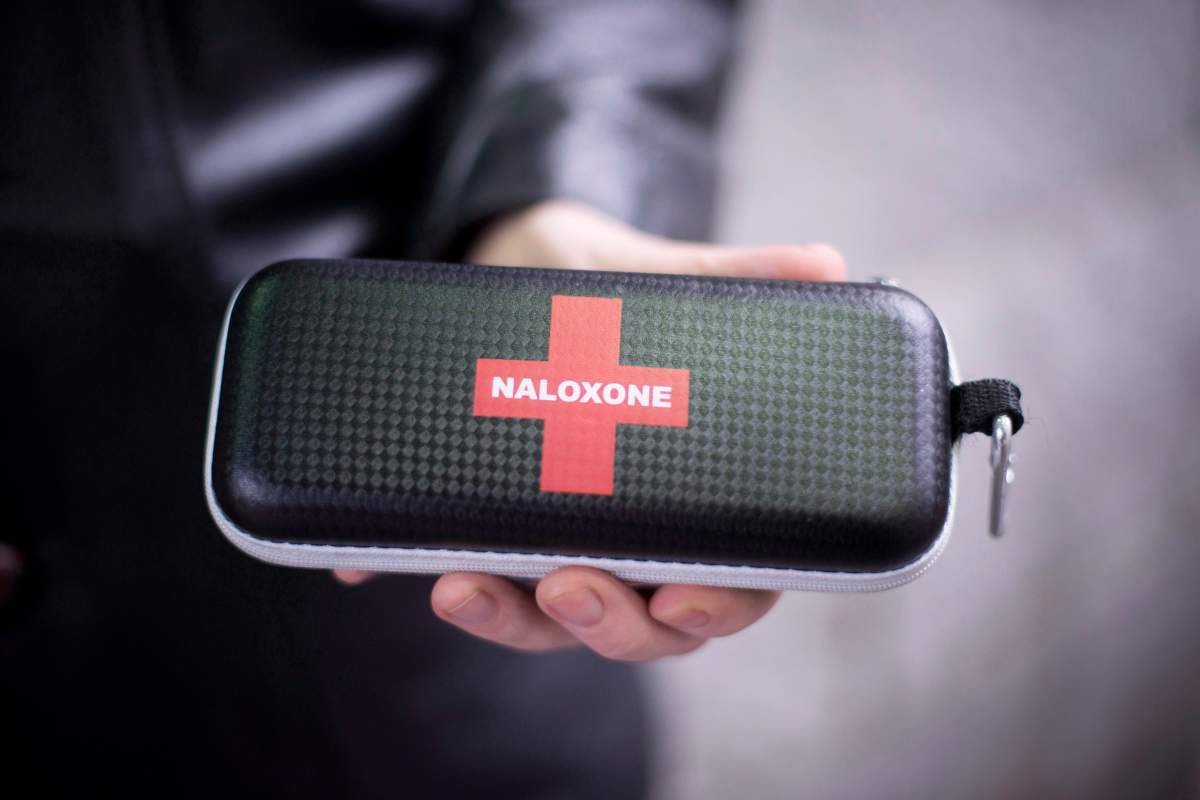Hamilton Police recently highlighted a battle with a new type of deadlier fentanyl through a random video post on social media Wednesday.

The footage posted to Twitter showed off the super potent drug Yellow Down, which has been on the radar of Hamilton Public Health (HPH) since Feb. 7 when the agency released a public alert.
Police says “a recent spike in drug overdoses” has made Yellow Down as a primary suspect in a number of instances.
“There is no quality control to account for purity and potency when it comes street drugs,” a police spokesperson said in the video.
Public health says symptoms of this type of fentanyl appear to be causing “seizure-like” responses including “jolting and stiffness.”
Based on consultations in the community, HPH believe the drug poisonings require up to three to seven rounds of Naloxone to reverse an overdose.
Hamilton Paramedics supervisor Dave Thompson confirmed to Global News there have been instances with the city’s social navigator program where almost a half a dozen doses have had to be administered.
“They are reporting that there’s sometimes four or five doses of Naloxone that are required,” Thompson explained.

Get weekly health news
“Our paramedics … obviously carry Naloxone with them … and we’ve had reports from our frontline staff of some overdose activity that’s been hard to reverse.”
Between Jan. 30 and Feb. 5, EMS calls for suspected opioid poisonings in general were over two times the weekly median for the past year.
The last spike began in December with an average of 76 suspected overdoses each month as of the end of February.
Public health exploring state of emergency amid opioid crisis in Hamilton
Hamilton’s medical officer of health is exploring the possibility of declaring a state of emergency amid an opioid crisis that has seen paramedic calls almost double over the last two years.
Ward 9 Coun. Brad Clark pitched a motion in mid-January to investigate the thresholds of opioid deaths and overdoses, with the prospect of launching an “effective response” opening up city “funding resources.”
The motion carried unanimously in a board of health meeting but the matter has since been deferred to later in March.
Paramedics responded to 814 incidents related to suspected opioid overdoses in 2022, according to city data, compared with 430 such incidents in 2017.
Opioid deaths have increased in Ontario by more than 100 per cent since 2017 and took a marked jump when the pandemic hit in March 2020.
The opioid-related death rate is 45 per cent greater in Hamilton compared with Ontario.
“Opioid-related deaths have increased exponentially from 26 in 2005 to 166 estimated in 2021,” said Julie Prieto, director of epidemiology and well-being said at the last board meeting.
“An estimated 30-per cent increase in opioid-related deaths was seen in 2021 compared to 2020.”
She went on to say the COVID-19 pandemic was particularly devastating for those with issues around mental health and substance abuse.
“The consequence of public health measures put in place to mitigate the spread and severity of the virus — for example, lockdowns, workplace closures and service disruptions — have further negatively impacted many Canadians’ mental health, particularly those who use drugs,” said Prieto.
Hamilton endorses new safe consumption site on Barton Street
Hamilton’s city council finalized its endorsement of a community organization’s application to provide a safe space where users can inject drugs in a supervised setting.
If approved by Ontario’s Ministry of Health, the city’s second supervised consumption and treatment site (CTS) will be located at 746 Barton St. E. and operated by the AIDS Network.
Hamilton already has one approved CTS site, operated by Hamilton Urban Core Community Health, temporarily located at 70 James St., soon to be re-located to 430 Cannon St. E., upon completion of a new building.
Thompson says protocols at a CTS site involves front-line ambulances and social navigator paramedics who distribute “sterile consumption supplies.”
Paramedics do distribute Naloxone to individual family members or loved ones in the general community on occasion for emergencies.
He says a 911 call should always be first, before using Naloxone, particularly if an individual has consumed an extra potent dose.
“That 911 call is paramount in making sure you do have a quick response if somebody is suffering an overdose,” he said.












Comments